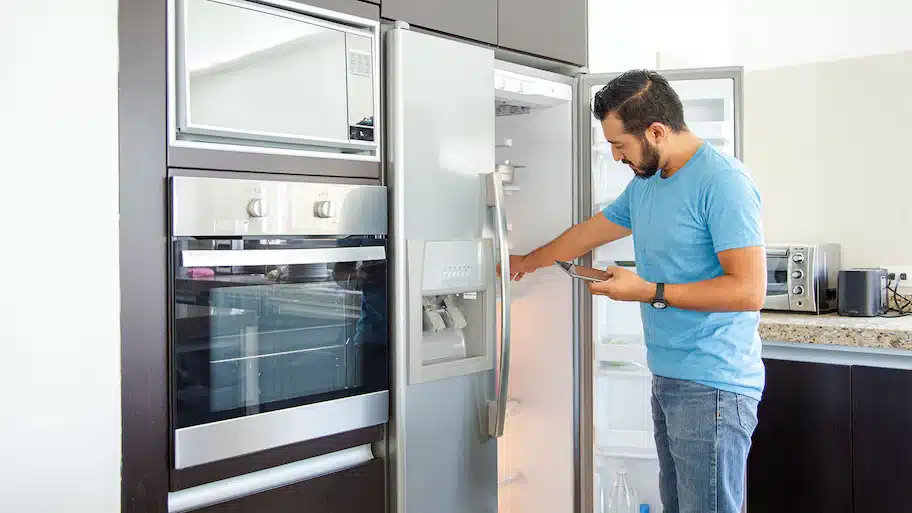
Refrigerators are essential appliances that keep our food and drinks cold and fresh. But how long does it take a refrigerator to get cold after you plug it in, move it, or lose power? And how can you tell if your refrigerator is cold enough to store food safely? In this blog post, we’ll answer these questions and more. We’ll also give you some tips on how to speed up the cooling process and how to maintain the optimal temperature in your fridge.
How long does it take a refrigerator to get cold? Refrigerators need at least 12 hours with no food inside to real optimal temperature.
There are many types of refrigerators available on the market, such as mini fridges, top freezers, bottom freezers, side by sides, French doors, etc. Each type of refrigerator has a different cooling time, depending on its capacity, design, and features.
Here are some examples of how long different types of refrigerators take to get cold:

These are just some examples of how long different types of refrigerators take to get cold. However, the actual cooling time may vary depending on the brand, model, condition, and settings of your refrigerator.
The best way to determine your refrigerator’s cooling time is to check the user manual or installation guide that came with your appliance. You can also find these documents online by searching for your refrigerator’s brand and model number.
The user manual or installation guide will tell you how long your refrigerator takes to get cold after plugging it in or moving it. It will also tell you how to set up your refrigerator properly, how to adjust the temperature settings, and how to troubleshoot any problems.
If you don’t have access to the user manual or installation guide, you can also use a thermometer to check the temperature inside your refrigerator. You can place a thermometer in a glass of water in the middle shelf of your fridge and wait for at least 24 hours before reading it.
The ideal temperature for your refrigerator is between 35°F and 40°F. If your thermometer shows a higher or lower temperature than this range, you may need to adjust the temperature settings or contact a professional for service.

There are several factors that can impact how long refrigerators take to cool, such as:
If you want to speed up the cooling process in your new or old refrigerator, you can follow these tips:
The most accurate way to know when your refrigerator is cold enough to store food is to use a thermometer, as explained earlier. However, if you don’t have a thermometer, you can also use some simple signs to tell if your refrigerator is cold enough, such as:
If you notice any of these signs, it means that your refrigerator is cold enough to store food safely. However, if you notice any of these signs, it means that your refrigerator is not cold enough and may need more time or service, such as:
If you notice any of these signs, it means that your refrigerator is not cold enough and may pose a risk of food poisoning. You should avoid putting any food in your refrigerator until it cools down properly or contact a professional for service.
Refrigerators are essential appliances that keep our food and drinks cold and fresh. But how long does it take a refrigerator to get cold after you plug it in, move it, or lose power? And how can you tell if your refrigerator is cold enough to store food safely?
The answer is it depends on the type, size, model, and condition of the refrigerator. On average, refrigerators take 12 hours to get cold, but this can vary from 4 to 24 hours depending on various factors. You can use a thermometer or some simple signs to check the temperature inside your refrigerator and adjust it accordingly.
You can also speed up the cooling process by following some tips, such as keeping the refrigerator away from the wall, putting ice in the freezer, not opening the door too often, keeping the kitchen cool, and cooling food down before putting it in the refrigerator.
We hope this blog post has helped you understand how long refrigerators take to get cold and how to make them cool faster and safer.
